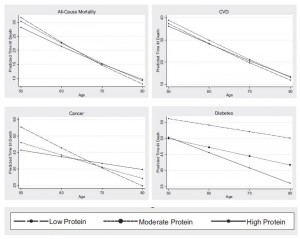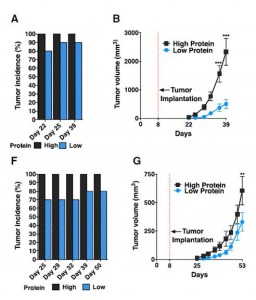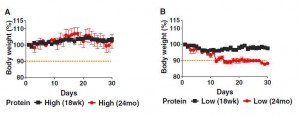I have a strange chocolate-related pet peeve. When someone tells me “You like white chocolate? But that’s not even real chocolate!”…it makes me want to hurl a block of white chocolate right at their smug face.
White chocolate gets absolutely no respect, while dark chocolate can apparently cure cancer and bring the dead back to life. And the darker the better. If you like 70% dark, your foodie friend will undoubtedly poo-poo that in favor of 85% or darker. Well it’s finally time to stand up, white chocolate lovers! All three of you. Because white chocolate is healthy, and here’s why.
The advantages of white chocolate
First off, dark chocolate is healthy, and is a PHD-recommended “supplemental food”. But just like how Arnold Schwarzenegger overshadows Danny DeVito in the movie “Twins”, so goes the relationship between dark and white chocolate. They share the same mother (the cacao tree) and the more popular sibling has desirable traits absent in the less popular sibling (flavonoids and psychoactive compounds). But just like Danny DeVito, white chocolate actually has a heart of gold (or rather, a heart of stable fatty acids).
White chocolate is simply cocoa butter plus some added milk, while dark chocolate is cocoa butter with (dark) cocoa particles added instead of milk. Each can have varying levels of sugar. White chocolate undergoes remarkably little oxidation during storage or cooking, unlike vegetable oils that autooxidize and may become carcinogenic. A quick look at the fatty acid profile of cocoa butter explains its stability. It’s made up of 60% saturated fat split between stearic and palmitic acids, about 30% monounsaturated, and only 3% polyunsaturated fat. The high stearic acid content means that cocoa butter has a smaller effect on cholesterol than do other fats with similar saturated percentages.
Plus cocoa butter has been shown to improve resistance to oxidation in rats when compared to vegetable oil. Cocoa butter may even help protect against fatty-liver related endotoxemia, via upregulation of an enzyme called ASS1 (argininosuccinate synthase 1, hee hee).
Dark chocolate sometimes contains mycotoxins and aflatoxins (which can be carcinogenic, depending on dose), whereas white chocolate doesn’t. While cocoa butter doesn’t have nearly as many health benefits as dark chocolate, it’s been shown to benefit platelet function and potentially atherogenesis more than dark chocolate (in men, but not in women…why must you be so confusing science?).
Finally, white chocolate isn’t toxic to dogs and cats due to low theobromine levels, whereas a high-percentage dark chocolate bar could kill a small dog. White chocolate also has negligible amounts of caffeine and other bioactive compounds, due these being water soluble and hence removed during processing. For those sensitive to dark chocolate, who exhibit symptoms such as as intestinal distress or headaches after consumption, white chocolate may be a good alternative.
Why is white chocolate a black sheep?
So why is cocoa butter rarely eaten (outside of chocolate bars), when other low-PUFA fats such as coconut oil and ghee are prized? Three reasons stick out: price, availability, and stigma. High-quality dark chocolate costs around a buck an ounce or less. It’s hard to even find high-quality white chocolate outside of some internet stores, and the price of edible pure cocoa butter is typically 50% or more above that of dark chocolate. Plus pure cocoa butter doesn’t really come in the form of standard-sized chocolate bars.
If you want bars, you have to jump down from 100% cocoa butter to around 30% or much lower, and these bars typically have almost 50% sugar content. Note that in 2002, the FDA set a minimum cocoa butter percentage of 20% in order for a product to be labeled “white chocolate”. But this definition also included minimum levels of milk solids and milk fat, so those staying away from milk may prefer pure cocoa butter. In my Willy Wonka white chocolate utopia, there would be 70%, 85%, and 92% white chocolate bars available at every grocery store, but as it stands you have to buy sugary white chocolate or make your own lower sugar version using cocoa butter.
“Cocoa Cooking”: say it three times fast
Stigma is a real problem for white chocolate producers. For some reason, the white chocolate lobby simply doesn’t have the power of Big Pharma or Tobacco, so you’ll never see ads encouraging you to try healthy cocoa fat in recipes. But you definitely can. The popularity of mole sauce suggests that even strong chocolate flavors can be handled in savory dishes. One chef says:
“It’s important that people break out of the mindset of chocolate as candy. Chocolate is chocolate. If you let it stand on its own, it becomes an ingredient like cumin or butter. If you let go of what your preconception of chocolate is–which for 99.9 percent of the people is a candy bar–it becomes another culinary weapon in your larder.”
Indeed, for most of its history, chocolate was exclusively used with savory/spicy ingredients. Cooking cocoa butter with meats or veggies may give them a heartier flavor, or you could try something more daring like salmon with white chocolate sauce. Snacks made with cocoa butter may be more practical than snacks high in coconut oil, as cocoa butter doesn’t melt around room temperature like coconut oil does.
Compared to dark chocolate, white chocolate needs much less sugar to mask bitterness (especially for us supertasters). It also complements delicate flavors whereas bitter dark chocolate overwhelms them, so my hunch is that white chocolate (or just cocoa butter) could provide a versatile base for things other than just sauces and desserts.
If you cook for someone, and the dish has cocoa butter or white chocolate in it, be prepared to defend your daring choice. Concerning the claim that white chocolate isn’t actually chocolate, I find that a bit ludicrous. When cocoa beans are pressed, they ooze out cocoa butter. It’s very similar to the relationship between olives and olive oil, or coconut flesh and coconut oil. When’s the last time you heard “Olive oil? But that isn’t even real olive!” I’ll chalk the misunderstanding up to the prevalence of fake white chocolates (below 20% cocoa butter or often none at all) combined with the rarity of dishes made with cocoa butter. You can’t like white chocolate if you haven’t had it, or if all you’ve had is an overly-sugared white chocolate bar.
Conclusion
Theobroma, the genus containing the cacao tree, translates to “food of the gods”. Chocolate was used as currency by ancient Mayans, and kept in safes with gold and precious stones. While dark chocolate is currently exalted as a king among medicinal foods, white chocolate has become the court jester. This is a shame, as white chocolate holds promise as a healthy and underutilized cooking ingredient.
White chocolate and cocoa butter keep extremely well at room temperature, so don’t be afraid to buy some and do your best Iron Chef impression. If the dish works out, feel free to comment here with the recipe. And if you find a high-quality white chocolate bar low in sugar, let me know. Kamal/Chocomal/Caramal excels in taste-testing.



















Recent Comments